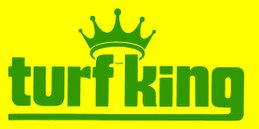Thursday, June 14, 2007
First Fertilization for $28.88
Chinch Bugs
 Chinch bugs can be very damaging to a lawn. As seen in the photo, they will eat the grass, but leave the weeds alone.
Chinch bugs can be very damaging to a lawn. As seen in the photo, they will eat the grass, but leave the weeds alone.
Chinch bugs are tiny insects about the size of an ant. Chinch bugs have short legs while ants have long legs. (I compare chinch bugs as roadsters and ants as monster trucks)
If you do end up with too many chinch bugs, the lawn will turn yellow. The chinch bugs suck the sap out of the grass plants. The lawn often looks as if it is lacking water, which in a sense it is. Watering the lawn just helps the grass to stay hydrated so that the chinch bugs can continue to feed.
Chinch bugs prefer the sunny areas of the lawn. I inspected a lawn once that was in front of a north facing building. Most of the lawn had been destroyed- except for about 8 feet near the building. The unusual thing was that the edge of the damage was in a nice neat straight line. I realized that the chinch bugs were happy to feed on the lawn in the sun, but stayed away from the lawn shaded by the building. (Now if they ran out of lawn in the sun, would they have gone to the lawn in the shade?)
We have found that an organic insecticide is usually effective in controlling the chinch bug damage.
We have realized that with insects and chinch bugs in particular that stopping the lawn from going brown is possible without necessarily eradicating all the chinch bugs.
More information on chinch bugs in our website library.
To go to our website
or to request a quote online
June 19/07 Jeff, one of our technicians found chinch bugs nymphs on a sunny lawn in Ancaster today. They had caused a patch about 3 feet in diameter to go yellow. Normally we think of July as the month for Chinch bug damage. I believe the warm weather of the past 3 weeks has hastened the maturity of the chinch bugs and also hastened the damage to the lawns.
Monday, June 11, 2007
Gypsy Moth Caterpillars
 These destructive pest
These destructive pest
Gypsy Moth Caterpillar - these caterpillars are dark and hairy with a double row of 5 pairs of blue and 6 pairs of red spots from head to tail. They feed on many tree species. Favourites include birches, lindens, crabapples, mountain ash, willows, oaks, blue spruce and many other trees. Voracious feeders, these caterpillars have been known to defoliate trees.
Trap caterpillars by tying a band of burlap around tree trunks. Inspect daily and destroy caterpillars.
Use Acecaps to prevent damage or foliar treatments. These must be applied by a professional
Turf King uses either Acecaps for larger trees or an organic insecticide containing Neem oil to control the Gypsy Moth Caterpillar
To contact us www.hamilton.turfking.ca
or to request a quote online
or Phone 905.318.6677 or 1.888.TURFKING
See the CBS news report on these pests from YouTube
Monday, June 4, 2007
Footprints in da Dew
 On an early morning walk through the golf course, these foot prints were visible in the dew on the fairway. I'm guessing a deer. There were a lot of deer seen along the roadways in the area as well.
On an early morning walk through the golf course, these foot prints were visible in the dew on the fairway. I'm guessing a deer. There were a lot of deer seen along the roadways in the area as well.
We saw other foot prints- one looked like a raccoon with its tail dragging in the dew.



